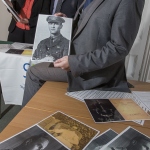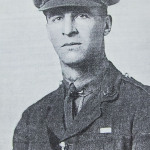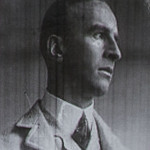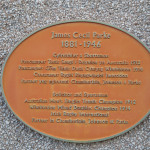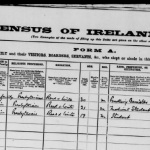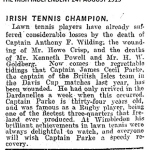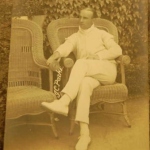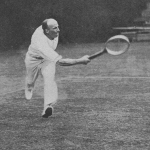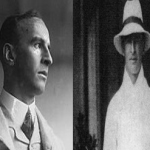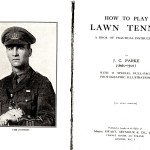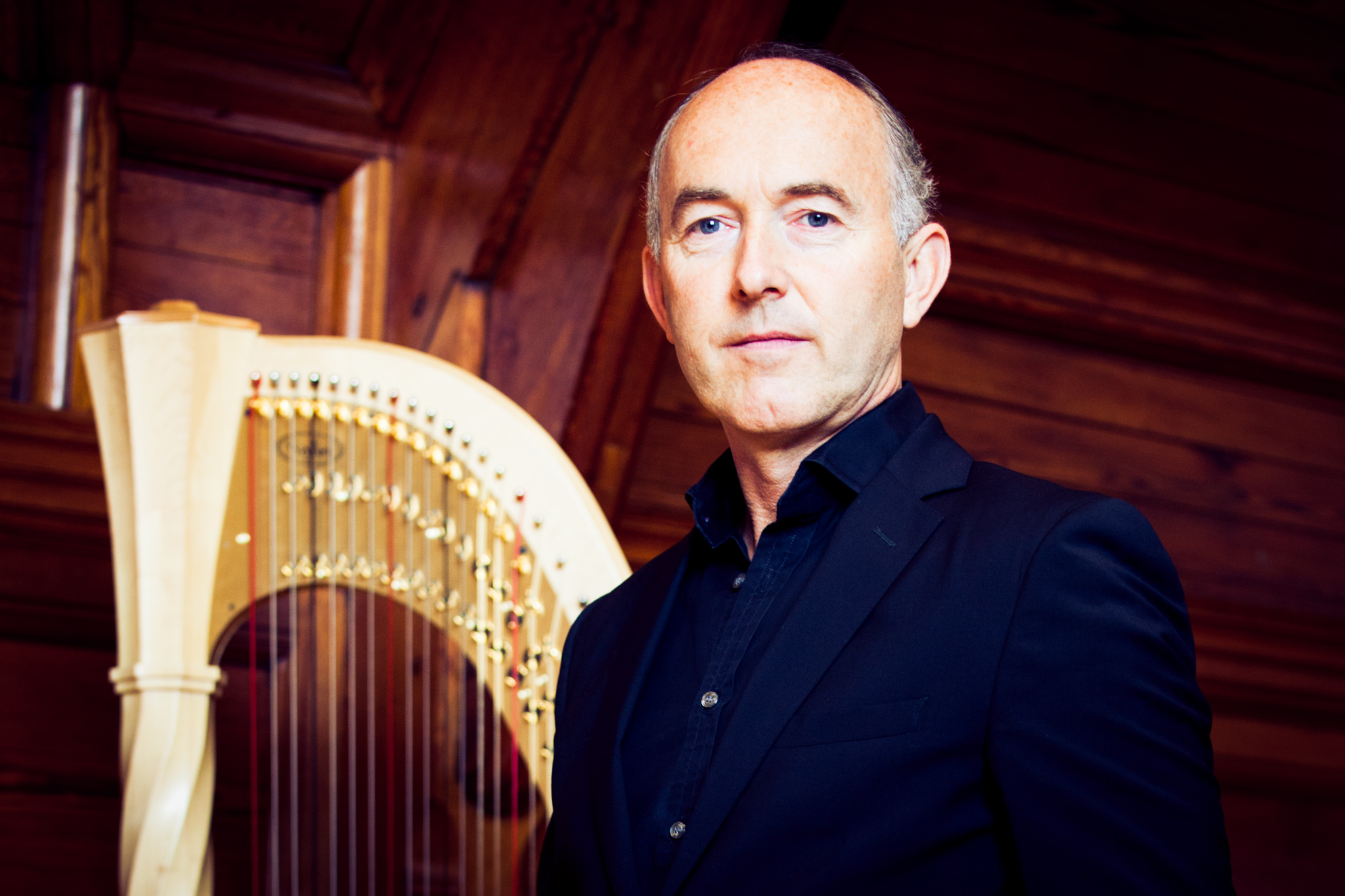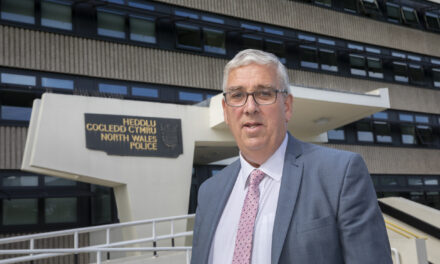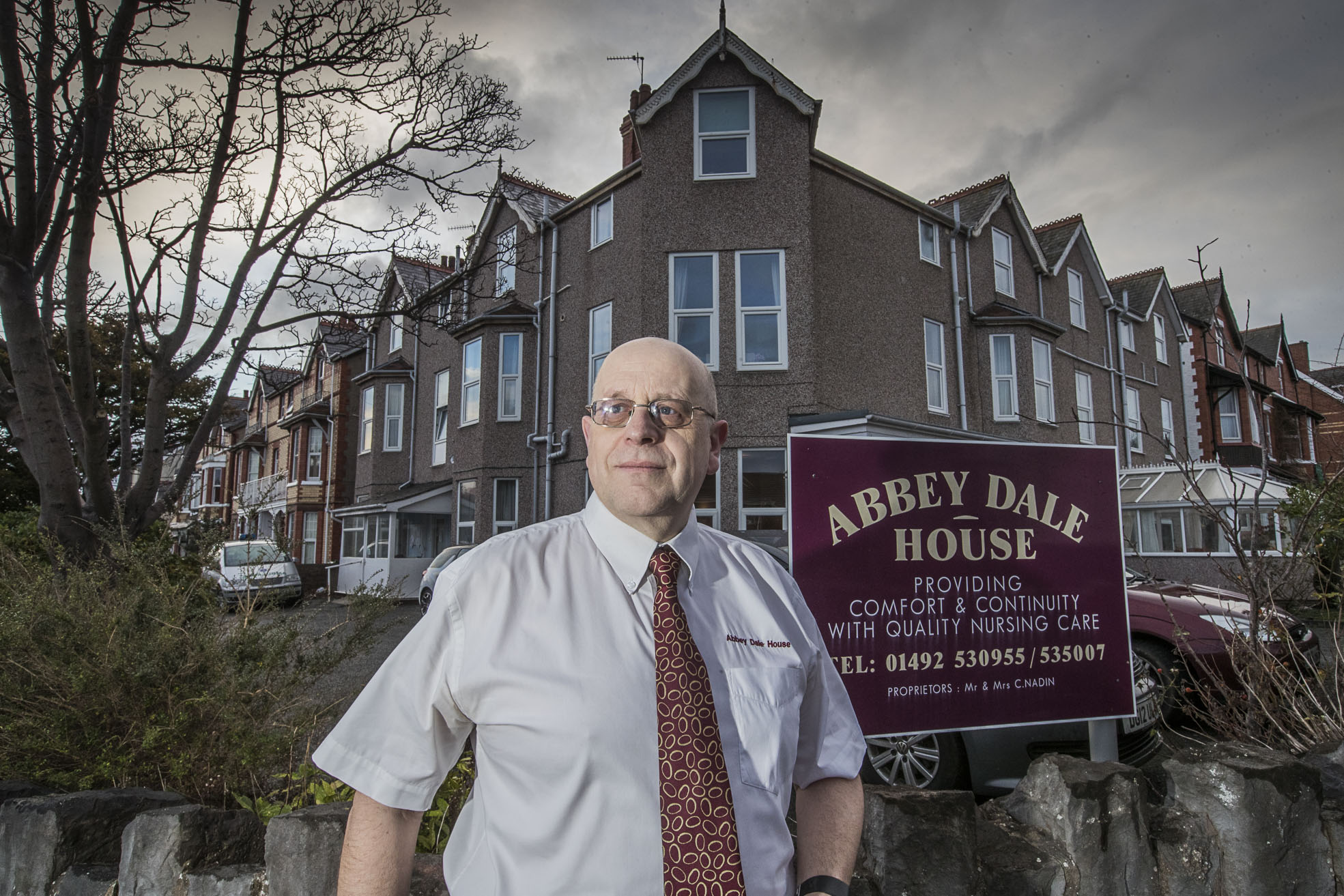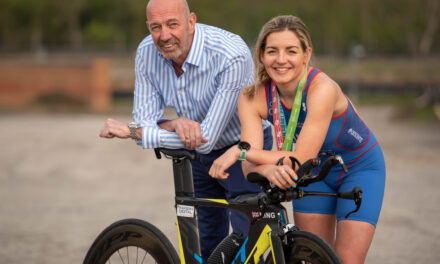The 70th anniversary of the death of a Wimbledon tennis champion, Olympic medallist and record-setting rugby star is being marked at the solicitor’s office in Llandudno where he practiced.
James Cecil Parke is a forgotten name today but the remarkable Irishman was an early 20th century combination of Andy Murray and Brian O’Driscoll, an international star at tennis and rugby.
He was born in 1881 in Clones, County Monaghan – the same town that produced world lightweight boxing champion Barry McGuigan, the ‘Clones Cyclone’ – won 20 caps for Ireland, gave up rugby to concentrate on tennis and won Olympic and Wimbledon titles, and represented his country at cricket, golf, athletics and even at chess.
Now staff at Swayne Johnson’s office in Trinity Square, Llandudno, have created an exhibition about the amazing sportsman who spent the last 26 years of his life working there and living in the town.
Swayne Johnson Director and Solicitor Michael Tree said: “There is a plaque on the building commemorating Cecil Parke and as this is the 70th anniversary of his death we thought we would like to mark his contribution not just to sport but also to Llandudno.
“We have been in touch with the County Monaghan Museum and Mr Parke still has relatives living in that area and many of his trophies and photographs of him are on display there.
“He continued to compete at a high level until 1925 and played a prominent part in the life of the town which he made his home.
“He was the driving force for the tennis courts in Craig y Don as well as being chairman of the North Wales Golf Club at West Shore.
“He was also a keen supporter of the Scout movement being both the Local Commissioner and Secretary of the Llandudno Association.”
Cecil Parke died suddenly in July, 1946, aged 64, after collapsing on Mostyn Street, in Llandudno but he had packed a lot into an eventful life.
His rugby career included playing against the All Blacks and Springboks as well as England, Scotland, Wales and France, he once set a record by kicking five penalty goals in a match and he bowed out in 1909 in the 19-8 win over France when he dropped a goal and kicked a conversion.
He retired from rugby to concentrate on tennis and in an extraordinary career he won Olympic silver in London in 1908; the Australian men’s singles and doubles titles and the Wimbledon mixed doubles title in 1914.
He also played for Britain in the Davis Cup, helping to win the trophy in 1912 by beating Australasia.
Daily Express tennis correspondent of the time, S Powell Blackmore, said: “He is one of the world’s greatest fighters, not on account of his cunning, but because of his daring strokes when concerned.
“Parke is most dangerous when his opponent thinks a shot has beaten him. It is not tactics, it is sinew, superlative nerve and the heart of a big sportsman.”
Parke also had a distinguished military career in the First World War One. As a captain in the Leinster Regiment he was wounded at Gallipoli in 1915 and later transferred to the Essex Regiment as Major when he returned to France where he was wounded for a second time and was mentioned in despatches.
He and his wife, Sybil, were married in 1918 and lived at Morwena, Great Orme Road, Llandudno. His grave is on the Great Orme and is marked by an impressive memorial.
They had one son, Patrick, who became a solicitor, and they adopted a nephew, Verner Parke, who was killed in the Second World War on his 21st birthday.
Michael Tree added: “We’re very proud to work here in the same building as this remarkable and distinguished man.
“He is clearly remembered very fondly in Ireland and we’re keen to preserve his memory in Llandudno which became his home and where he made such a contribution to local life.”
For more on Swayne Johnson go to http://www.swaynejohnson.com/
A film about the life of James Cecil Parke is available on the RTE website at http://www.rte.ie/centuryireland/index.php/watch/james-cecil-parke-a-forgotten-legend-of-irish-sport

